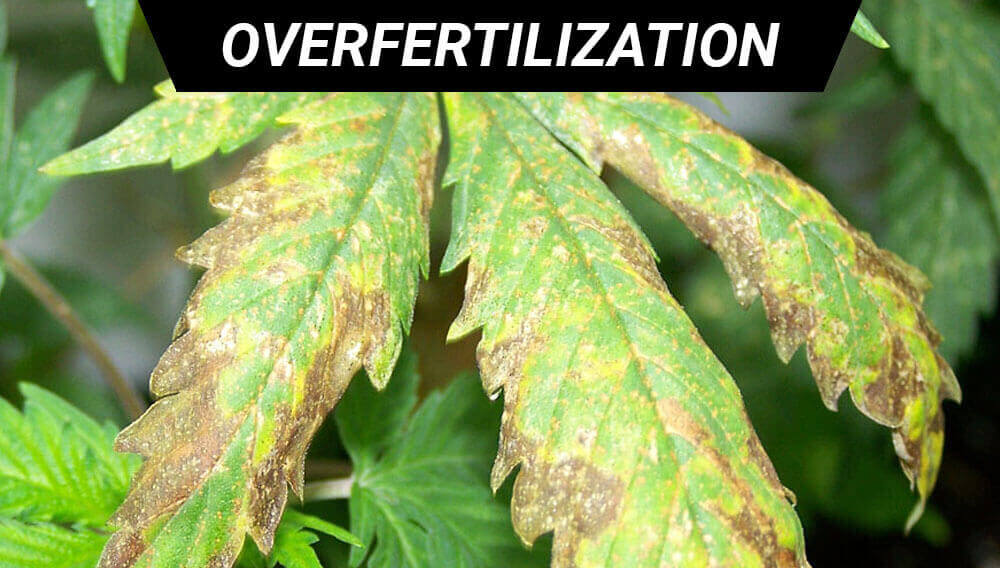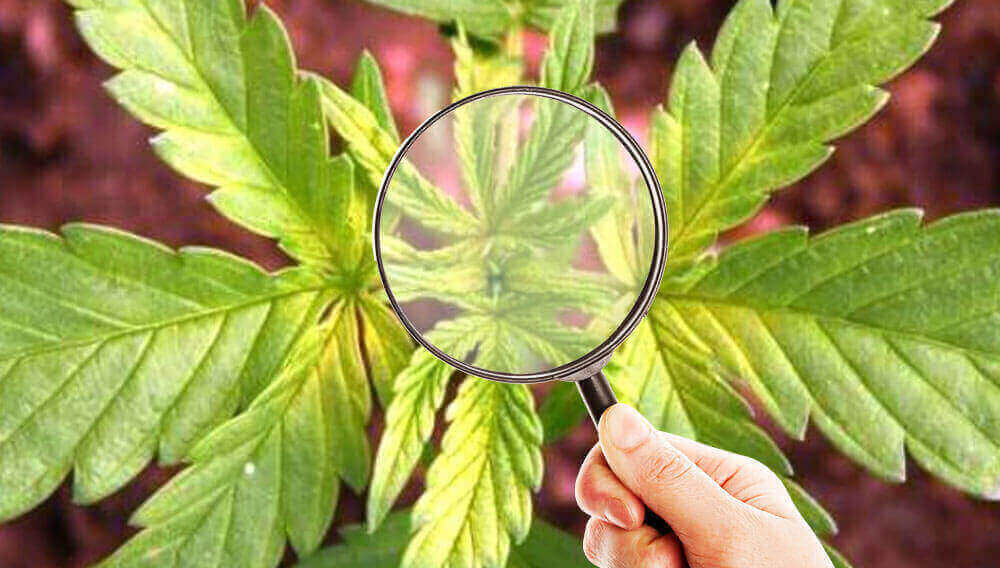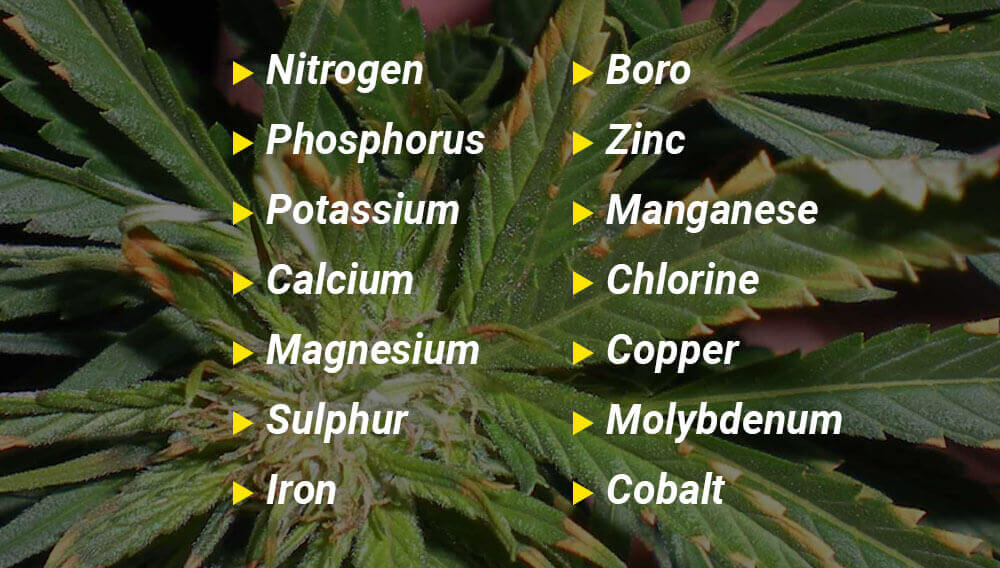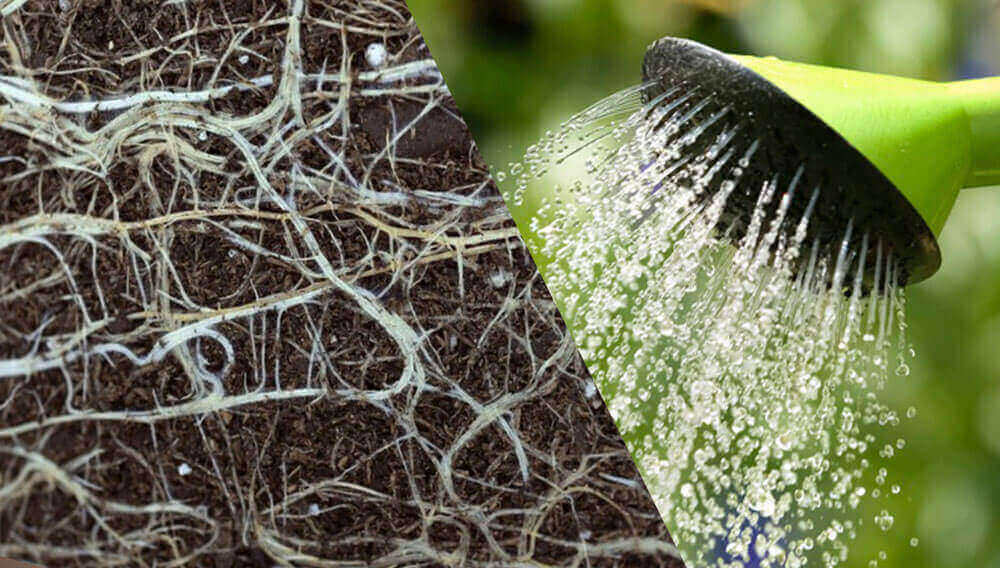Compost/fertilizers are a good way to boost your marijuana grow – more qualifed and abundant crop; if in excess, you’d have a reverse effect, paralyzing the grow and producing less, low-quality buds, because abundant fertilization provides excessive, accumulated, toxic salt – root system of the plants can’t absorb and assimilate the nutrients.
Let’s talk about over-fertilization – how to recognize/fight it, and some general tips against growing nutrition problems.

overfertilization
Some preventing tips
Mainly, you always have to measure the exact fertilizing dose to be applied – you should apply a little less than the manufacturer’s suggested amount (if everything’s nice, you can increase the dose).
PH measurement’s very important to control over-fertilization; with a PH meter, try to keep the established parameters – PH’s directly related to strain nutrient absorption/solubility: if high, the strains won’t be able to absorb and assimilate the nutrients properly, no matter how little – they’ll accumulate in the substrate as toxic salt, but the plant won’t be able to absorb them.
Terrain plants are much stronger against over-fertilization – the terrain drains the excessive salts; flowerpot plants are much weaker against over-fertilization – the flowerpot tends to accumulate salts at its bottom.
How to recognize over-fertilization
Generally, over-fertilization causes bent-downward, claw-like leaves, burns and very dark green shades – depending on the abundant chemical element, the plant will react differently; it’s very difficult to recognize the excessive element – usually, due to excessive fertilizer (with lower dose, it’s not necessary to know the specific element). Anyway, here you have some feedback to easily recognize the problematic nutrients.

Recognize overfertilization
What nutrients are causing me trouble?
Usually, with excessive growth product, over-fertilization provides excessive nitrogen (abundant nutrient in growth fertilizers); with excessive flowering product, over-fertilization tends to provide excessive phosphorus (P) or potassium (K).
Anyway, for specific info, here you have the more characteristic symptoms for every nutrient.
- – Nitrogen: too green and white leaves – fungi and pest attacks are more abundant with excessive nitrogen; stems get flimsy and, gradually, weakly bent – with severe over-fertilization, the leaves get copper brown, they get dried and they fall. If this happens when growing, the plant grows much less; when flowering, the buds will be scarcer and smaller.
- – Phosphorus: excessive phosphorus will be recognized after a few weeks – marijuana tolerates a great quantity of phosphorus.
- – Potassium: very similar to lack of magnesium/manganese/zinc/iron – if these nutrients are scarce, potassium overdose is about to appear.
- – Calcium: the strain gets withered – lack of potassium, magnesium, manganese, iron.
- – Magnesium: excessive magnesium’s very rare – in this case, calcium gets blocked.
- – Sulphur: if sulphur products aren’t applied, sulphur will never be problematic – with excessive sulphur, leaves are small, very green, and vegetative growth gets paralyzed (severe excess produces burns).
- – Iron: excessive iron’s not common – in this case, lack of phosphorus (brown-stained leaves).
- – Boron: foliage yellowing – leaf margins get dried and gradually follow; excessive boron comes from excessive phytosanitary products rich in boric acid.
- – Zinc: excessive zinc paralyzes iron absorption and kills the plant in the short term.
- – Manganese: the plant needs magnesium against high temperature – with excessive manganese, growth slows down.
- – Chlorine: leaf tips and margins get burned.
- – Copper: excessive copper provokes a lack of iron, chlorosis, strain development gets paralyzed and root system gets blocked – usually, due to excessive copper-based phytosanitary products.
- – Molybdenum: lack of iron and copper.
- – Cobalt: it could be problematic with nitrogen assimilation – cobalt’s kind of unnecessary for strain development.

overfertilization nutrients
Macroelements
Nitrogen
Bent-downward, claw-like, green dark leaves – strain development’s paralyzed and the vegetative structure gets scarcely robust and vigorous, very weak and flimsy.
Phosphorus
Excessive phosphorus means a lack of calcium, magnesium, copper, iron and zinc.
Potassium
Potassium over-fertilization means a lack of iron, magnesium, manganese and zinc.
Side elements
Magnesium
Absorption of other nutrients is blocked.
Calcium
Absorption of other nutrients is blocked.
Microelements
Iron
Soft chlorosis in the whole plant.
Zinc
Excessive zinc’s very toxic – finishes the life of the plant quickly.
Boro
Leaf necrosis and defoliation.
Molybdenum
Excessive molybdenum means a lack of copper and zinc.
All these varied symptoms show the difficulty when recognizing specific nutrient lacks – as previously mentioned, it’s not necessary to recognize the exact lack (usually, problems come from excessive fertilizing products; lower doses are the solution).
How to combat over-fertilization

Root cleaning
For soft over-fertilization, just irrigate during one/two weeks with clean and soft water – the substrate’s purified and excessive-nutrient salts are eliminated; for severe over-fertilization, if you think the plant’s in danger, the only solution’s root washing.
This has been a concise approach on the main factors related to over-fertilization; we hope this post solves all your general growing doubts around – otherwise, leave your comment and we’ll try to solve your doubts and write another post, as complete as possible.




Mark christiansen
Should i remove the dry shade leaves on my plant from over fertilizing ???
Ive flushed the pot what more should i do … especially since its auto bloom and is flowering big time ….. HELP !!!!
James Musich
How 2 correct the PH in your soil veg stage